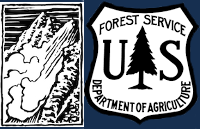Nearly 3 feet of dense, well bonded snow makes up the snowpack above 8,000 ft. in the Lionhead area near West Yellowstone. No discernible weak layers were found during stability tests. This pack is capable of supporting a large load and is a strong foundation for future storms. Photo GNFAC
Forecast link: GNFAC Avalanche Advisory for Mon Dec 3, 2012
